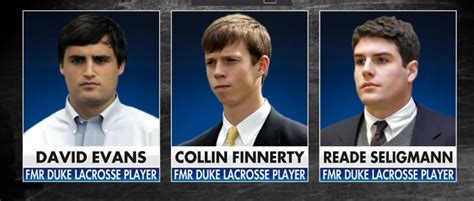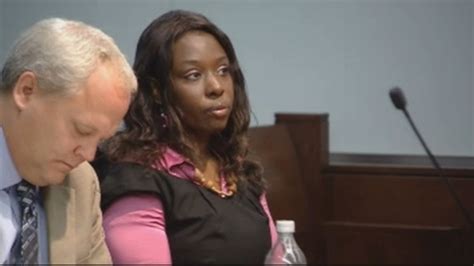Duke Lacrosse Case

The Duke Lacrosse case, a highly publicized and controversial incident, shook the foundations of Duke University and the broader community in 2006. The case involved three members of the Duke University men's lacrosse team, who were falsely accused of raping a stripper at a party. The incident sparked widespread outrage, protests, and heated debates about race, class, and the reliability of the justice system. In this article, we will delve into the intricacies of the case, examining the events leading up to the accusations, the investigation, and the eventual exoneration of the accused players.
Background and Investigation

The Duke Lacrosse team, comprising predominantly white, affluent students, had hired two strippers, one of whom was a black woman, to perform at a party on March 13, 2006. The party, attended by approximately 40 team members, took place at a house off-campus, rented by three of the team’s captains. The evening’s events were marred by allegations of racial slurs and inappropriate behavior, which would later become a focal point in the media and public discourse. Following the party, one of the strippers, Crystal Mangum, accused three lacrosse players, Reade Seligmann, Collin Finnerty, and David Evans, of raping her in a bathroom at the residence.
Charges and Media Frenzy
The allegations sparked an immediate and intense media frenzy, with many outlets jumping to conclusions and portraying the accused players as guilty. The case was fueled by preconceived notions of privilege, racism, and sexism, with some pundits and commentators making sweeping statements about the supposed culture of entitlement among Duke’s student-athletes. The district attorney, Mike Nifong, was criticized for his handling of the case, as he made public statements that many perceived as prejudicial and inflammatory. As the investigation progressed, it became clear that the prosecution’s case relied heavily on Mangum’s testimony, which would later be discredited due to inconsistencies and contradictions.
| Key Players | Roles |
|---|---|
| Reade Seligmann | Accused player |
| Collin Finnerty | Accused player |
| David Evans | Accused player |
| Crystal Mangum | Accuser |
| Mike Nifong | District Attorney |

Exoneration and Aftermath

After a protracted and tumultuous investigation, the North Carolina Attorney General’s office took over the case in January 2007. Following a thorough review of the evidence, the Attorney General’s office announced that the charges against the three players would be dropped, citing a lack of credible evidence. The decision was based on DNA analysis, which failed to match any of the accused players to the alleged crime scene, as well as inconsistencies in Mangum’s testimony. The exoneration of the players was met with a mix of emotions, ranging from relief and vindication to outrage and disappointment. The case led to a re-examination of the justice system, the role of the media, and the importance of due process in high-profile cases.
Key Points
- The Duke Lacrosse case was a highly publicized incident involving false rape allegations against three members of the Duke University men's lacrosse team.
- The case was marked by a rush to judgment, with many media outlets and commentators jumping to conclusions about the accused players' guilt.
- The investigation was criticized for its handling, with the district attorney facing accusations of prejudice and incompetence.
- The exoneration of the players highlighted the importance of due process and the need for a nuanced approach to high-profile cases.
- The case had significant implications for the justice system, the media, and the broader community, leading to a re-examination of issues such as privilege, racism, and sexism.
Lessons Learned and Implications
The Duke Lacrosse case serves as a cautionary tale about the dangers of a rush to judgment and the importance of upholding due process, even in the face of public pressure and emotional appeals. The case highlights the need for a critical and nuanced approach to complex issues, recognizing the potential for false accusations and the importance of protecting the rights of the accused. Furthermore, the case underscores the importance of media responsibility, emphasizing the need for balanced and accurate reporting, particularly in high-profile cases where emotions and biases can run high.
What were the main allegations in the Duke Lacrosse case?
+The main allegations in the Duke Lacrosse case involved the accusation of rape against three members of the Duke University men's lacrosse team by a stripper, Crystal Mangum.
What were the key findings of the investigation?
+The investigation found that there was a lack of credible evidence to support the allegations, including DNA analysis that failed to match any of the accused players to the alleged crime scene, as well as inconsistencies in Mangum's testimony.
What were the implications of the case for the justice system and the media?
+The case led to a re-examination of the justice system, highlighting the importance of due process and the need for a nuanced approach to high-profile cases. The case also underscored the importance of media responsibility, emphasizing the need for balanced and accurate reporting.
In conclusion, the Duke Lacrosse case was a complex and highly publicized incident that highlighted the importance of upholding due process, protecting the rights of the accused, and promoting media responsibility. The case serves as a cautionary tale about the dangers of a rush to judgment and the need for a critical and nuanced approach to complex issues. As we reflect on the case, it is essential to recognize the importance of learning from our mistakes and working towards a more just and equitable society.



